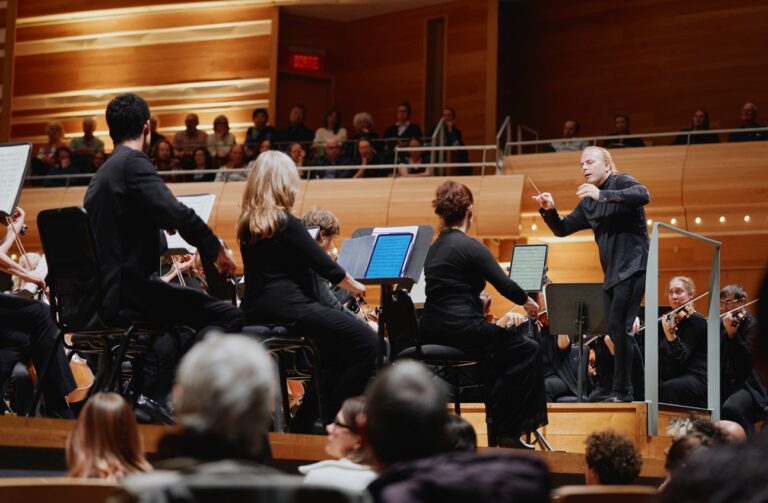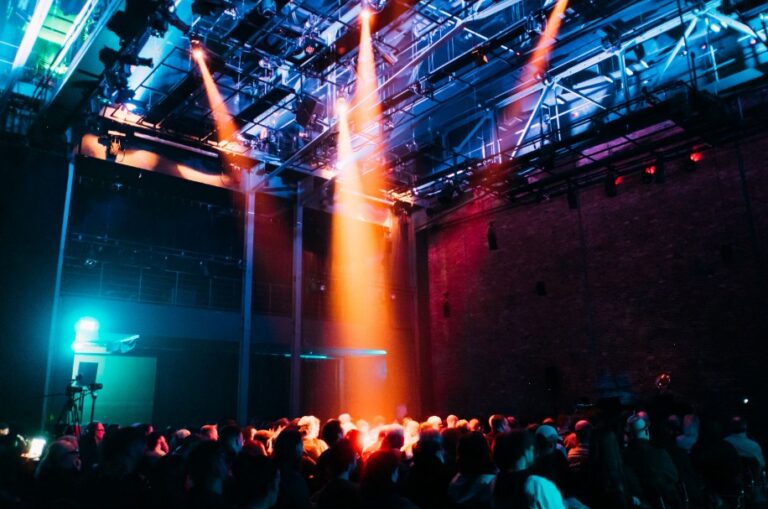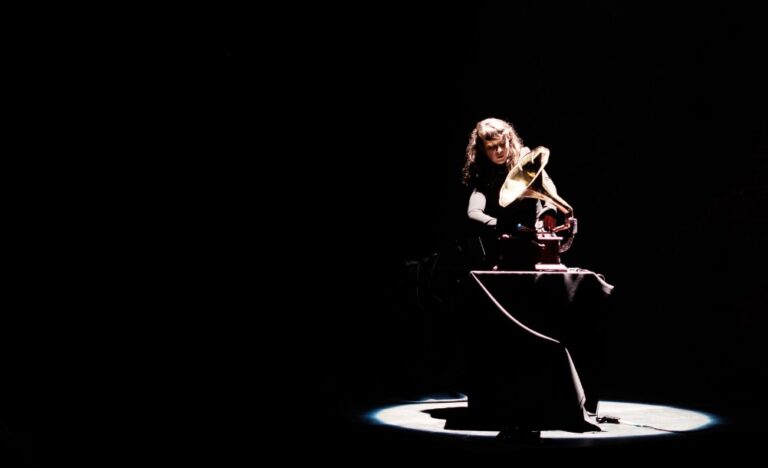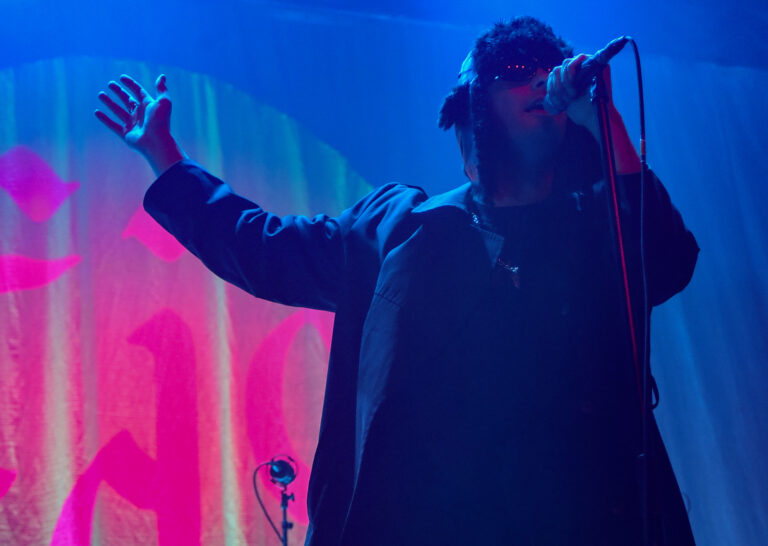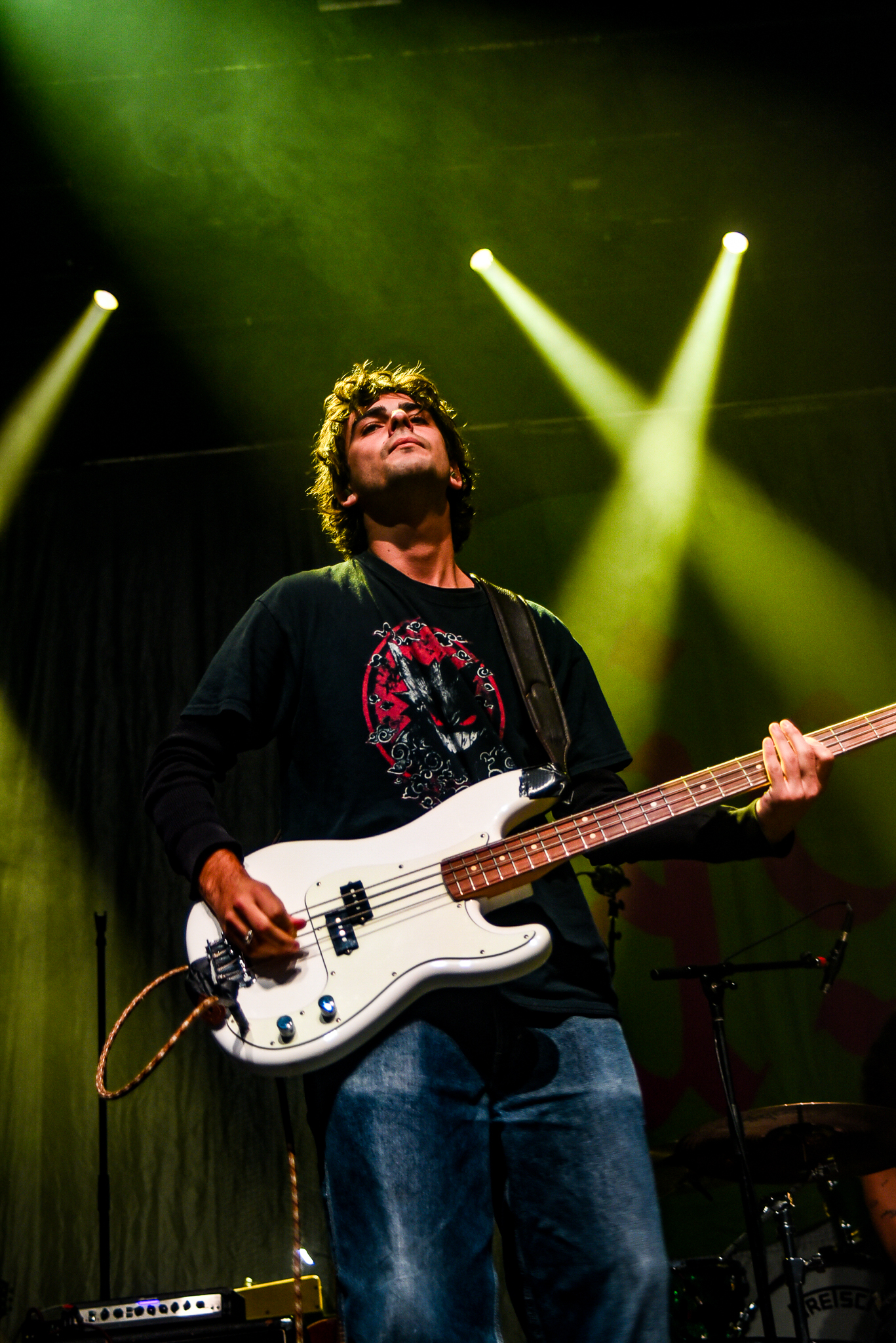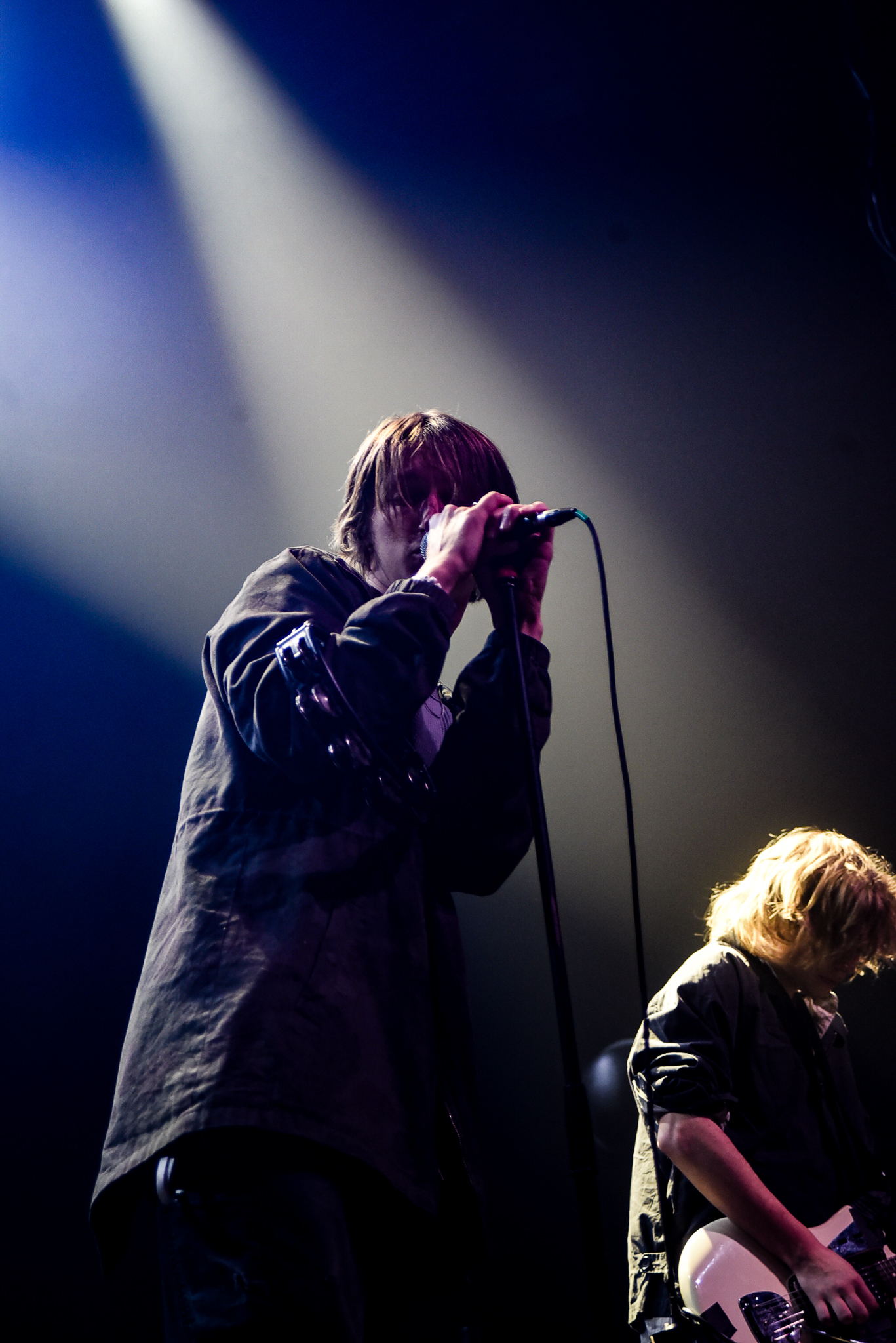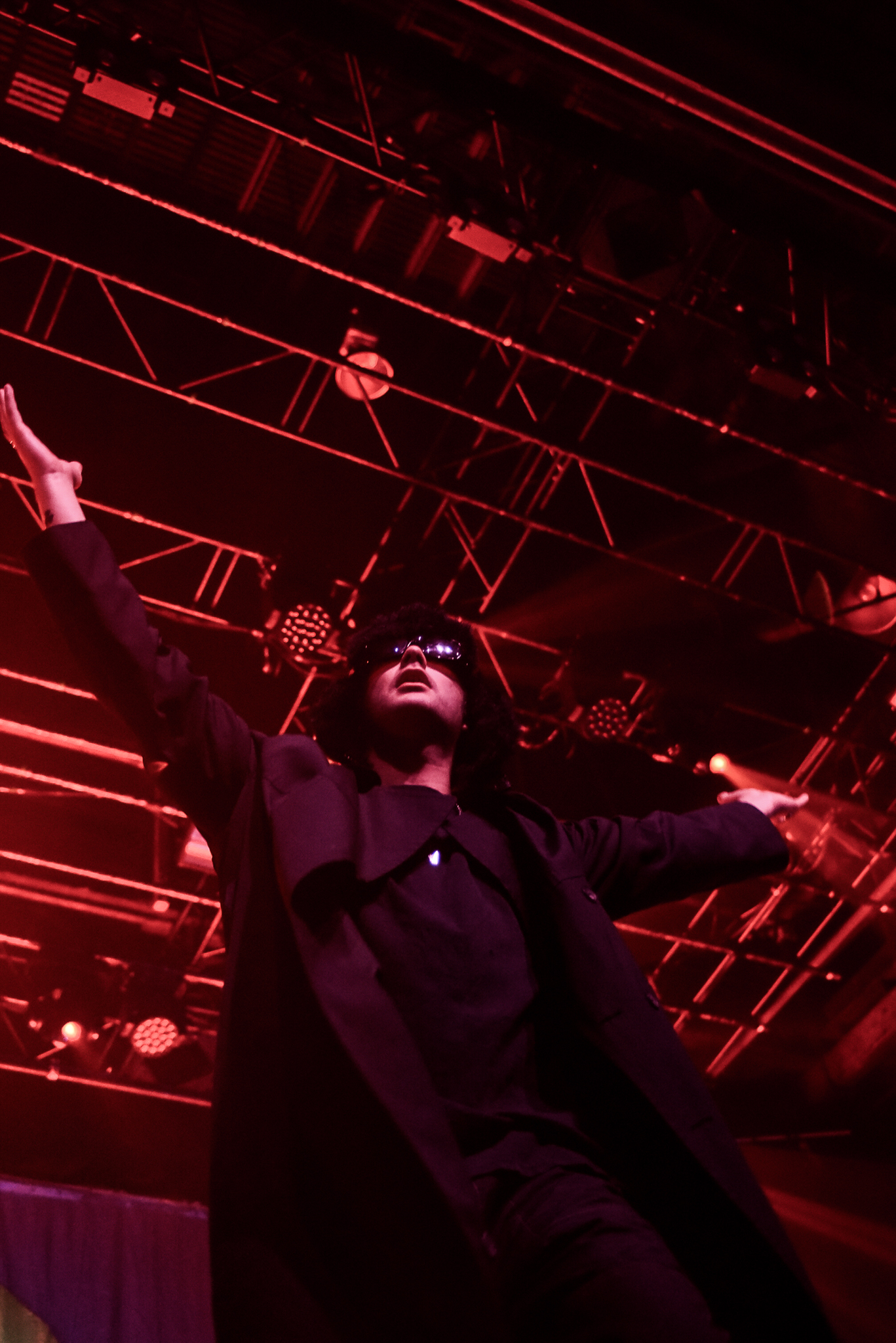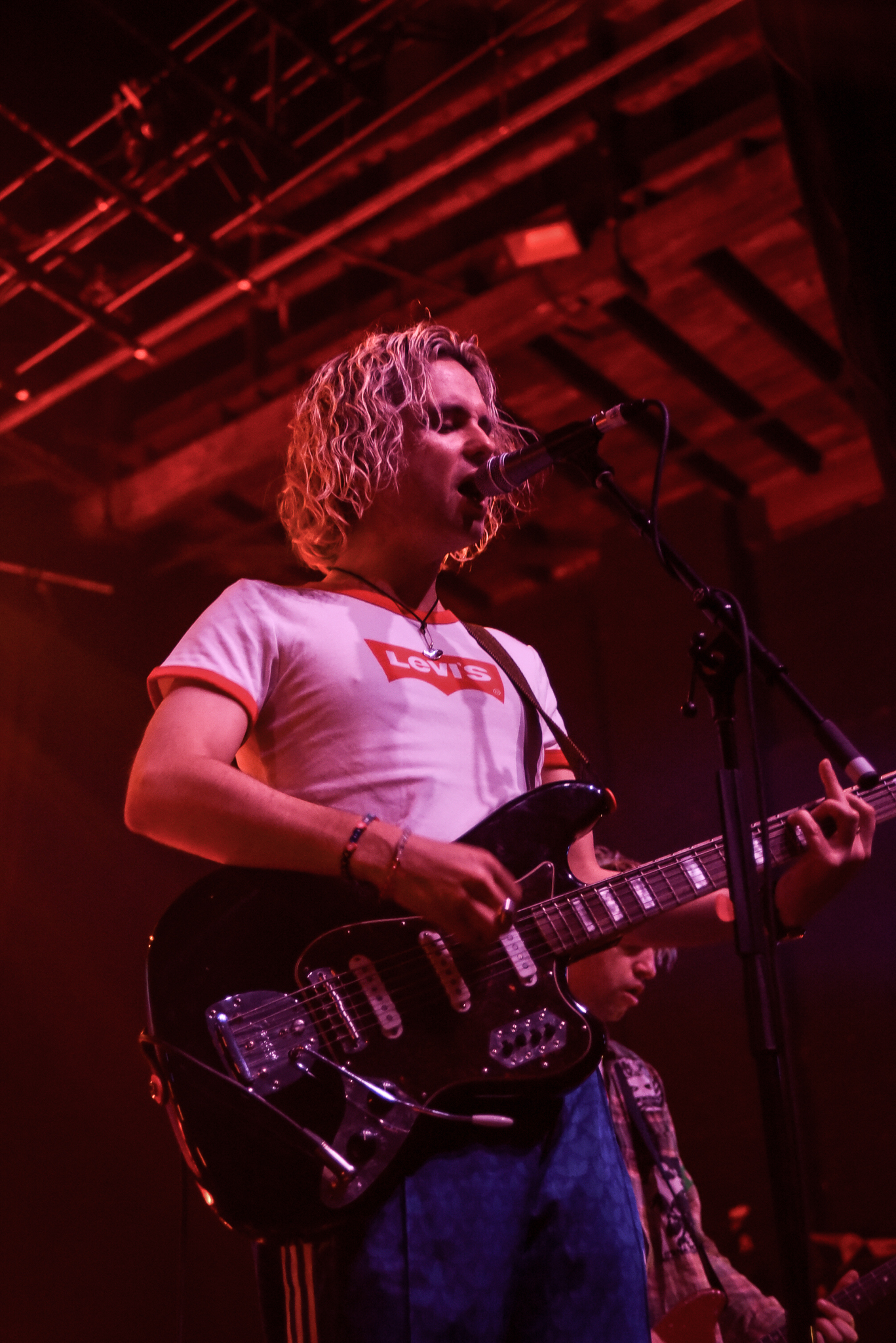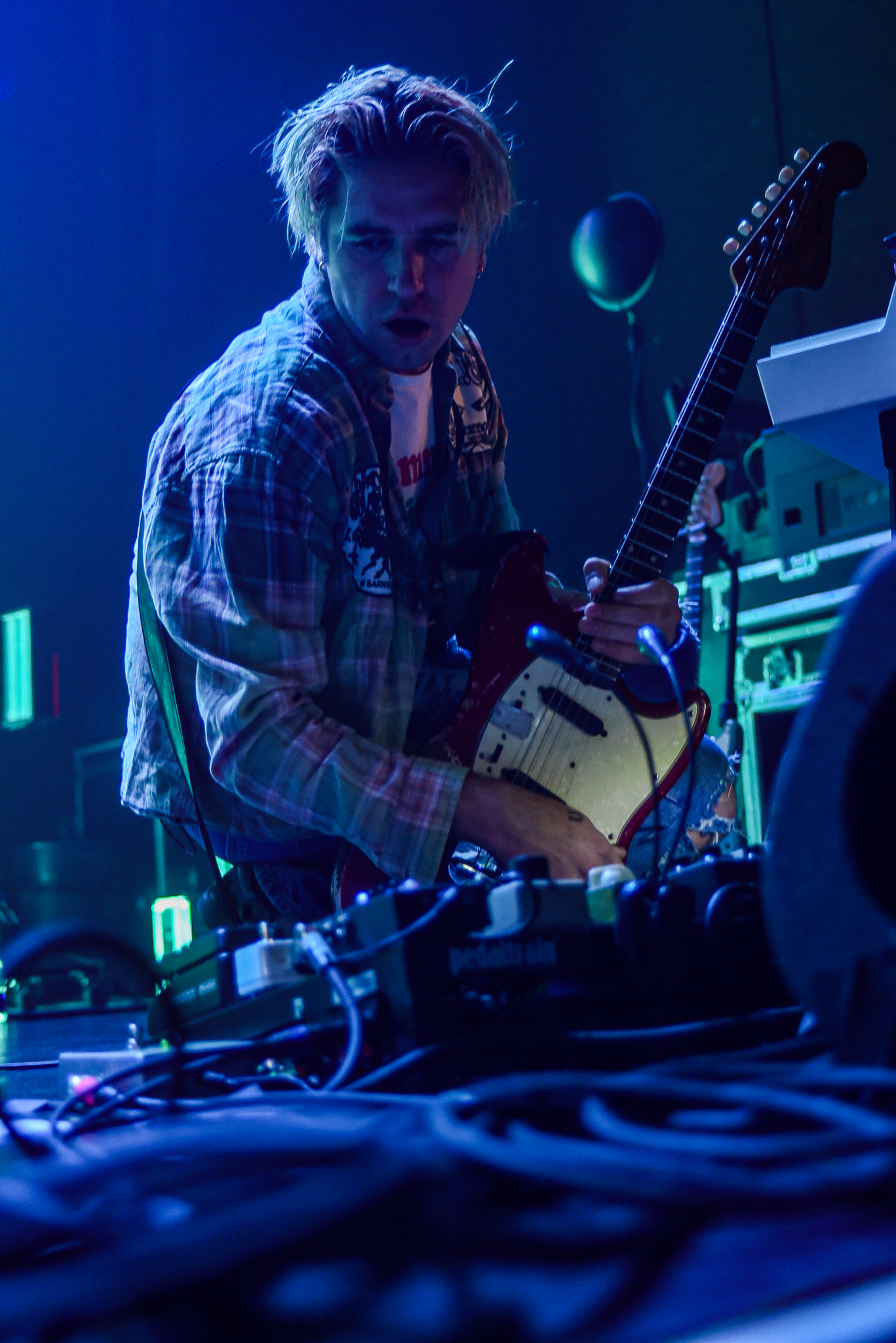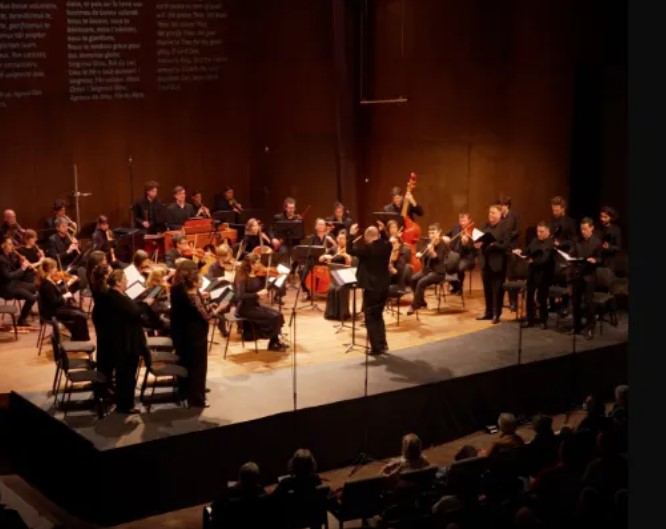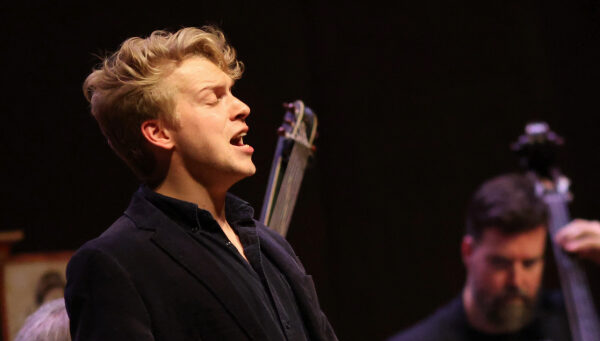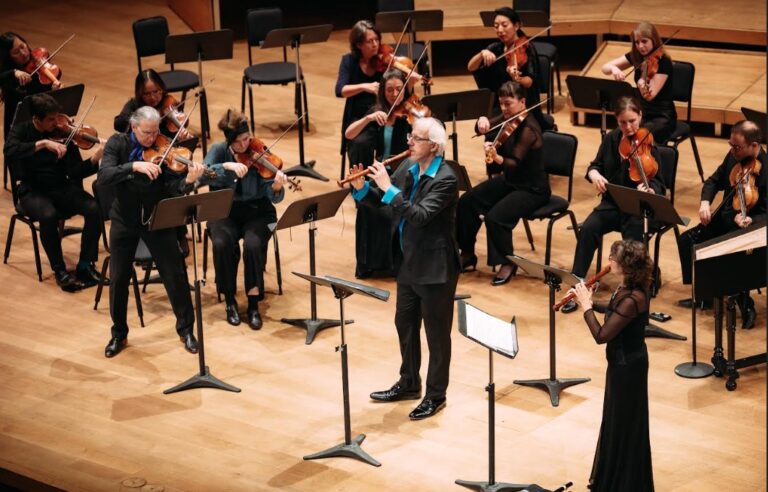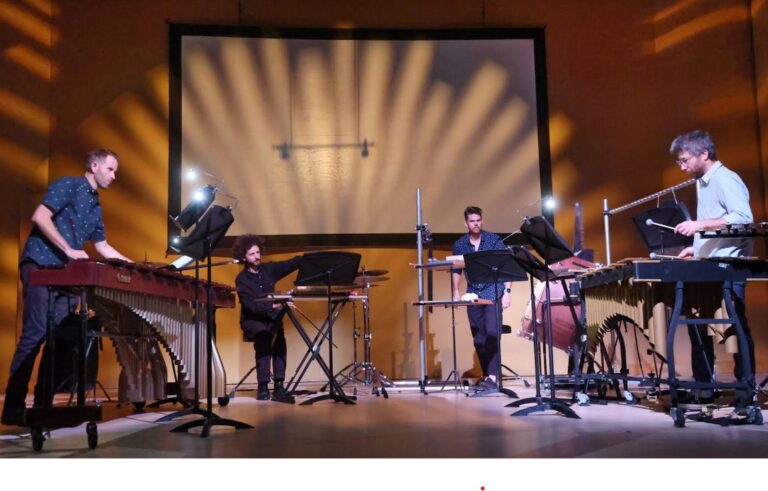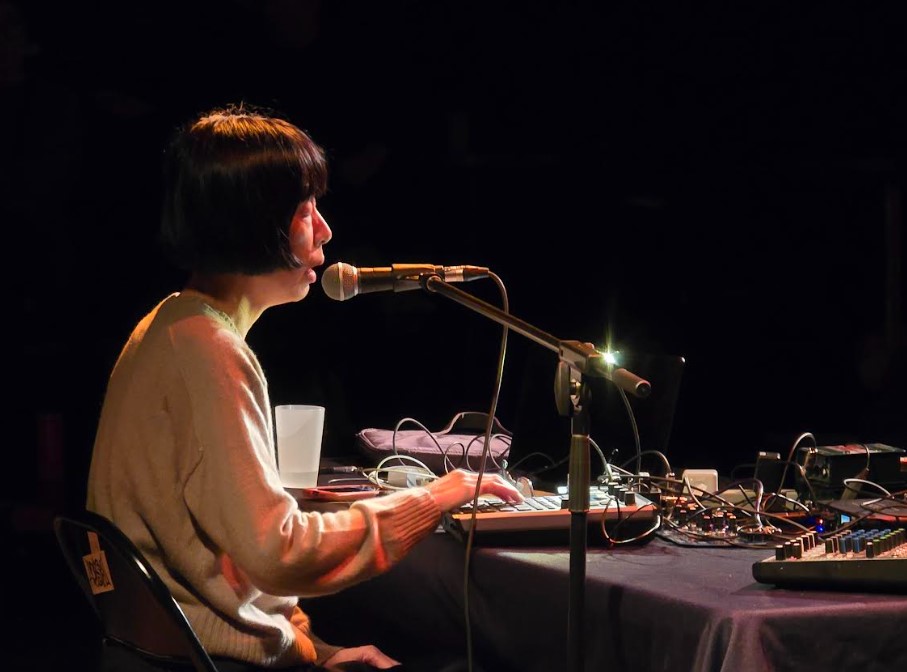Céu, which means “Sky” in Portuguese, arrived on stage dressed all in black, with a necklace to match her dress, long black lace-up boots and a flower tattooed on her shoulder. Her stage presence was remarkable, as she alternated between dance steps and simplistic choreography.
Accompanied by her bassist Lucas Martins, who has been with her since the very beginning, Thomas Harres on drums, Leonardo Caribe Mendes on guitar and cavaquinho and Sthe Araujo, a talented percussionist, the singer transported us into her particular universe, in which she mixes soul, funk, jazz and Brazilian rhythms such as samba, always with a retro background, her signature. In fact, all her musicians are also backing singers, enriching the show.
She mainly shared songs from her most recent album Novela released this year but added hits from her other albums, such as Malemolencia, from the album Céu.
“I’d have loved to speak French with you, but I’m going to go with English,” she tells us from the outset, as several Brazilians in the room shout ”In Portuguese!”
My favorite song is Gerando Na Alta, which she sings as a duet with the Senegalese-born French artist anaiis, but which percussionist Sthe interpreted perfectly in her place. In this song, Céu speaks of the importance of celebrating friendship between women, while the word Novela, taken from the word telenovela, addresses the dramatic aspect of our lives. Some songs had no transition, while she interacted with the audience at other times. She takes the time to showcase her musicians in turn, as she does with Sthe, for example, before the song Lenda, from the album Céu, which opens with percussion.
Much to my delight, we were treated to a reggae sequence, with High na Cachu followed by Cangote from the Vagarosa album. Of course, we couldn’t end the concert without a few covers of Brazilian classics. And for this, she chose two legends: João Gilberto with Bim Bom, and Caetano Veloso with Pardo, both from Bahia.
The highlight of the evening was the encore with Bob Marley’s Concrete Jungle, which she performed beautifully with Haitian singer Paul Beaubrun, who opened the concert. The latter was introduced by his father, the great singer of the group Boukman Eksperyans. “When I saw Paul sing, I said to myself that he had to sing this song with me”, Céu confided. Indeed, Paul seems to be a great fan of Bob Marley, as during the first part he played three songs by the Jamaican icon, always taking care to add his own special touch. However, I would have liked to discover other original compositions such as Noyé, which opened the show.

